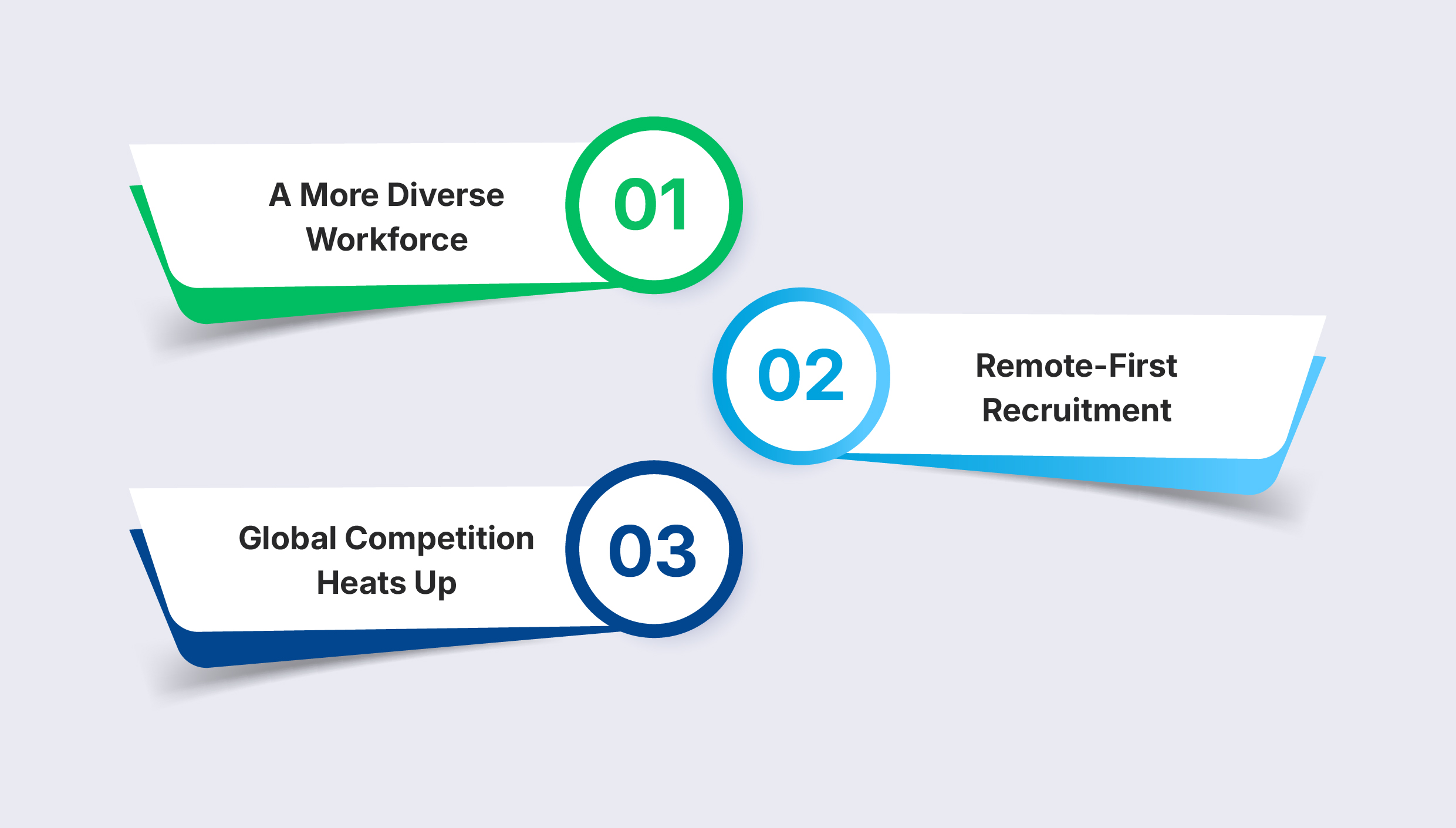
Blogs
Home » U.S. Visa Changes & How It’s Gonna Affect Tech Hiring in 2025
The tech sector hiring in the United States is going through an earthquake as new U.S. visa changes were applied in 2025. As global competition for qualified tech talent is increasing day by day, these trends may bring devastating changes everywhere, from startup growth to multinational talent acquisition strategies.
In this blog, we break down the key policy changes, their expected impact on the tech sector, and what hiring managers, recruiters, and HR professionals need to know to stay ahead

The U.S. has emerged as a base for transformation over the past few years. Across industries from AI to fintech to biotech, are ramping up recruitment for software developers, data scientists, cybersecurity experts, and cloud engineers. However, demand far outpaces the supply of qualified domestic candidates.
This talent gap kinda forced companies to look outside the U.S., and honestly, the H-1B visa’s been super important for getting skilled tech folks on board.
2025 introduces several federal reforms that reshape how U.S. companies can access international tech talent. Here are the most significant updates:
1. H-1B Visa Lottery Overhaul
The Biden administration went ahead and changed up the H-1B lottery system to cut down on fraud and make things a bit fairer. Now, it’s more like one application per person, so even if someone’s got a bunch of job offers, they only get one shot in the lottery, which honestly makes me feel kinda more fair for everyone.
Impact on Tech Hiring: This levels the playing field for startups and small businesses that previously couldn’t compete with tech giants, submitting dozens of applications per candidate.
The Optional Practical Training (OPT) program, especially the STEM extension, is still super important for recent grads. In 2025, they’ve updated the rules to allow stuff like remote and hybrid work, which kinda just makes sense now with how work’s changed since the pandemic.
Impact: Companies can now tap into a wider pool of entry-level tech talent without being restricted by office location requirements.
Tech professionals from countries like India and China often face long backlogs for employment-based green cards. In 2025, the government is proposing to advance priority dates and ease some of the country caps.
Impact: It kinda helps reduce the uncertainty and stops high-skilled workers from leaving, so companies can hang on to great talent longer.

Thanks to these visa adjustments, companies can now explore more executive search strategies that include international candidates without the same level of legal or logistical friction.
As more foreign-born workers gain access to the U.S. market, hiring managers can target niche skill sets, such as blockchain engineering or quantum computing, that are still rare among domestic job seekers.
An influx of eligible tech workers may lead to wage stabilization in certain markets, particularly in saturated hubs like Silicon Valley and New York. However, competition for top-tier talent will still drive premium compensation packages.

Small and mid-sized tech businesses must adapt quickly to capitalize on these changes. Here are some steps to consider:
Navigating immigration updates and recruiting globally can be overwhelming. Earning up with an executive search partner that gets both compliance and hiring stuff can honestly make the whole thing way smoother.
Hiring international talent involves complex documentation. Best to talk with an immigration attorney so your stuff doesn’t end up clashing with the 2025 rules.
Reflect flexible work arrangements and visa sponsorship opportunities in your listings to attract a broader talent pool.
While the 2025 visa changes offer positive momentum, challenges persist:
As barriers lower for global tech professionals, companies are likely to benefit from diverse perspectives and cross-cultural innovation.
The alignment of visa rules with flexible work policies further legitimizes global hiring models, enabling U.S. firms to onboard international staff without mandatory relocation.
Places like Canada, the UK, and Germany aren’t just sitting back, they’re tweaking their immigration systems too, trying to bring in the best tech minds. If U.S. companies don’t move fast or think smart, they’re going to end up missing out.
The U.S. visa changes rolling out in 2025 aren’t just boring policy stuff, they’re game changers for your tech hiring plans. They can either slow you down or help you grow, big time. The companies that take the time now to rethink how they hire, stay on top of compliance, and go global with their talent search? They’re the ones that’ll win in the long run.
And hey, if pulling all that off sounds like a lot, consider teaming up with a solid executive search partner who gets how visas, compliance, and tech hiring all work together.

Recent Blogs

How One Bad Hire Can Throw Everything Off – And What It Costs You


What Most Staffing Firms Get Wrong About the Entertainment Industry






©Rolehunting all rights Reserved.